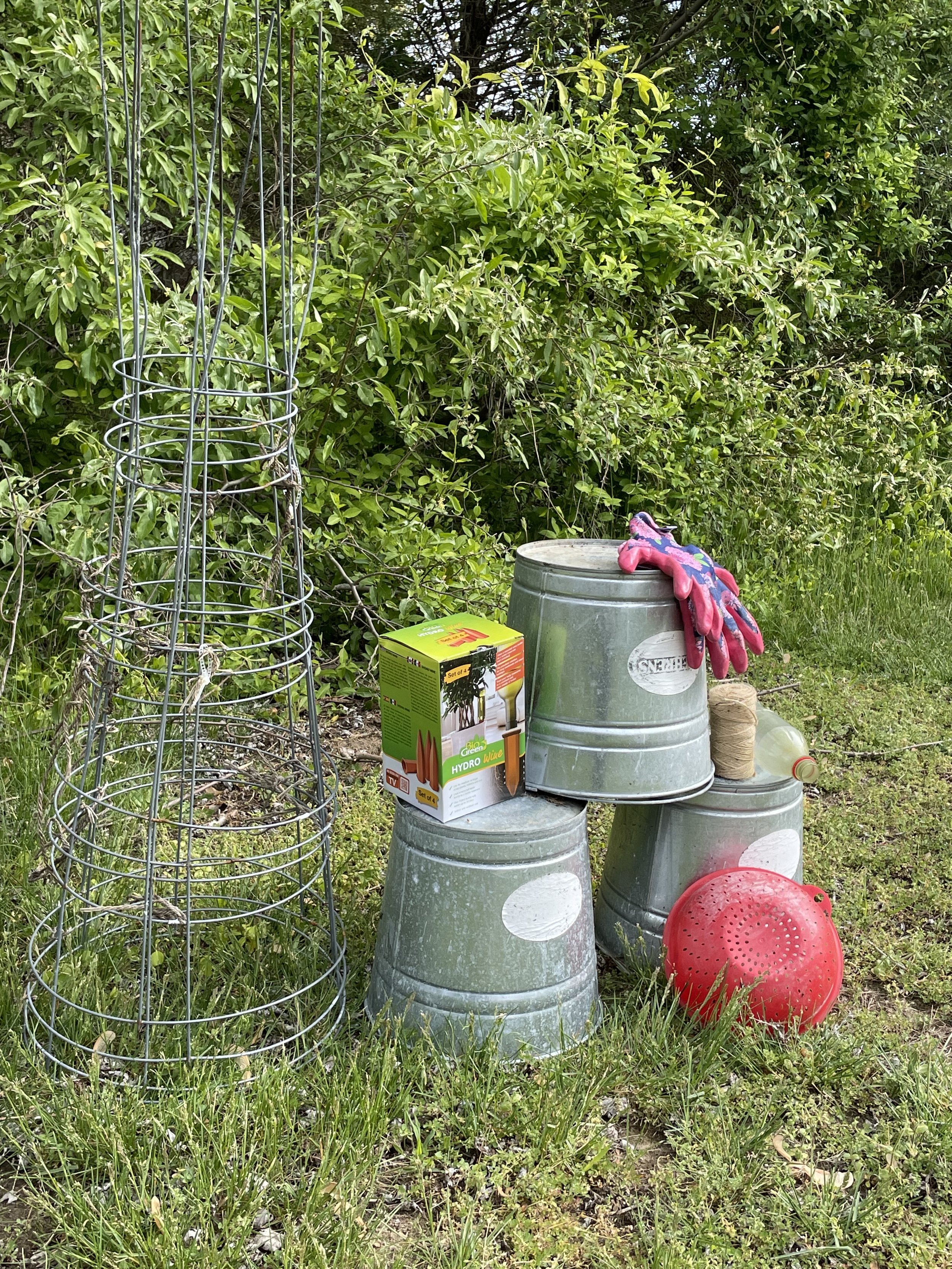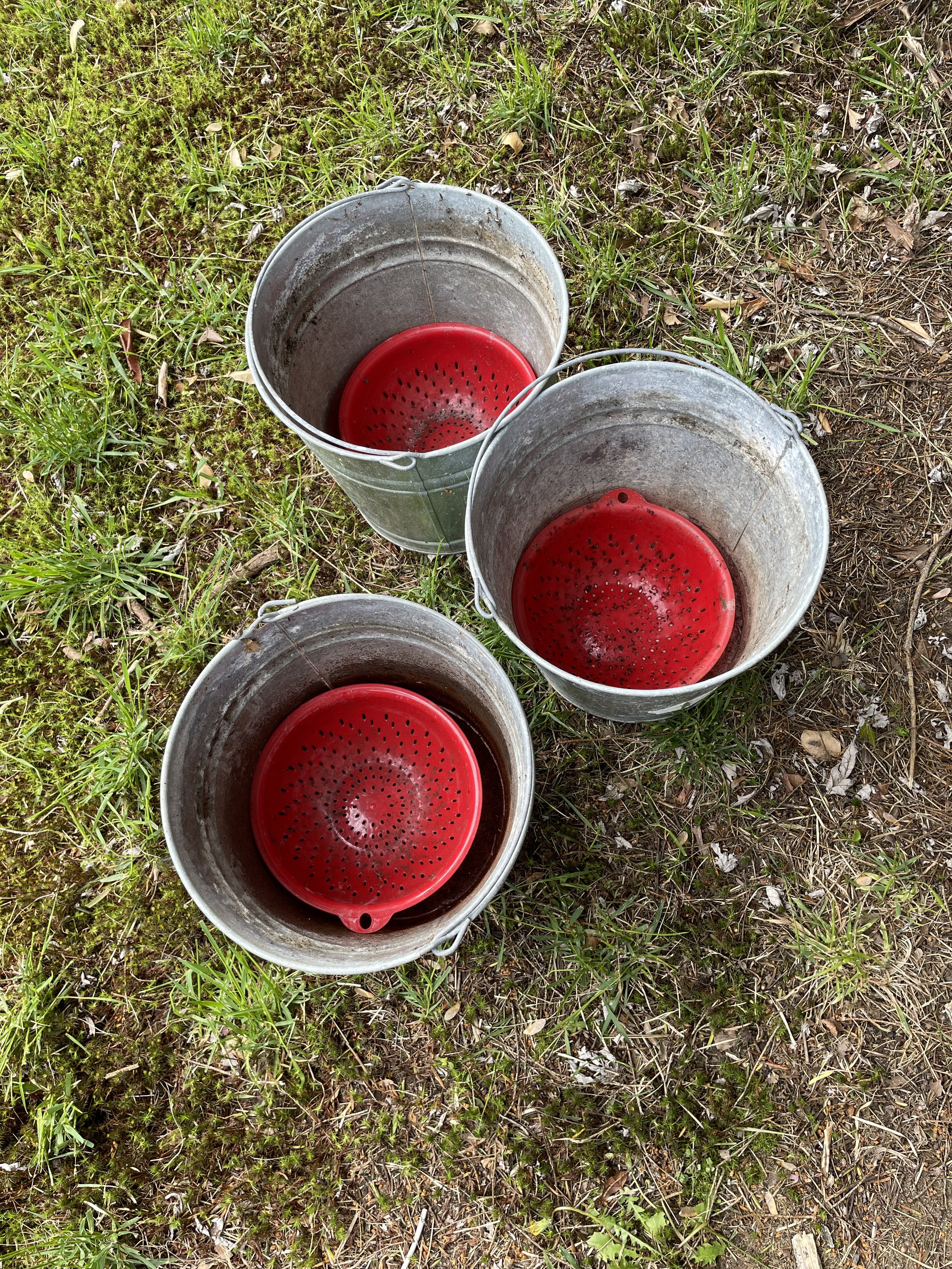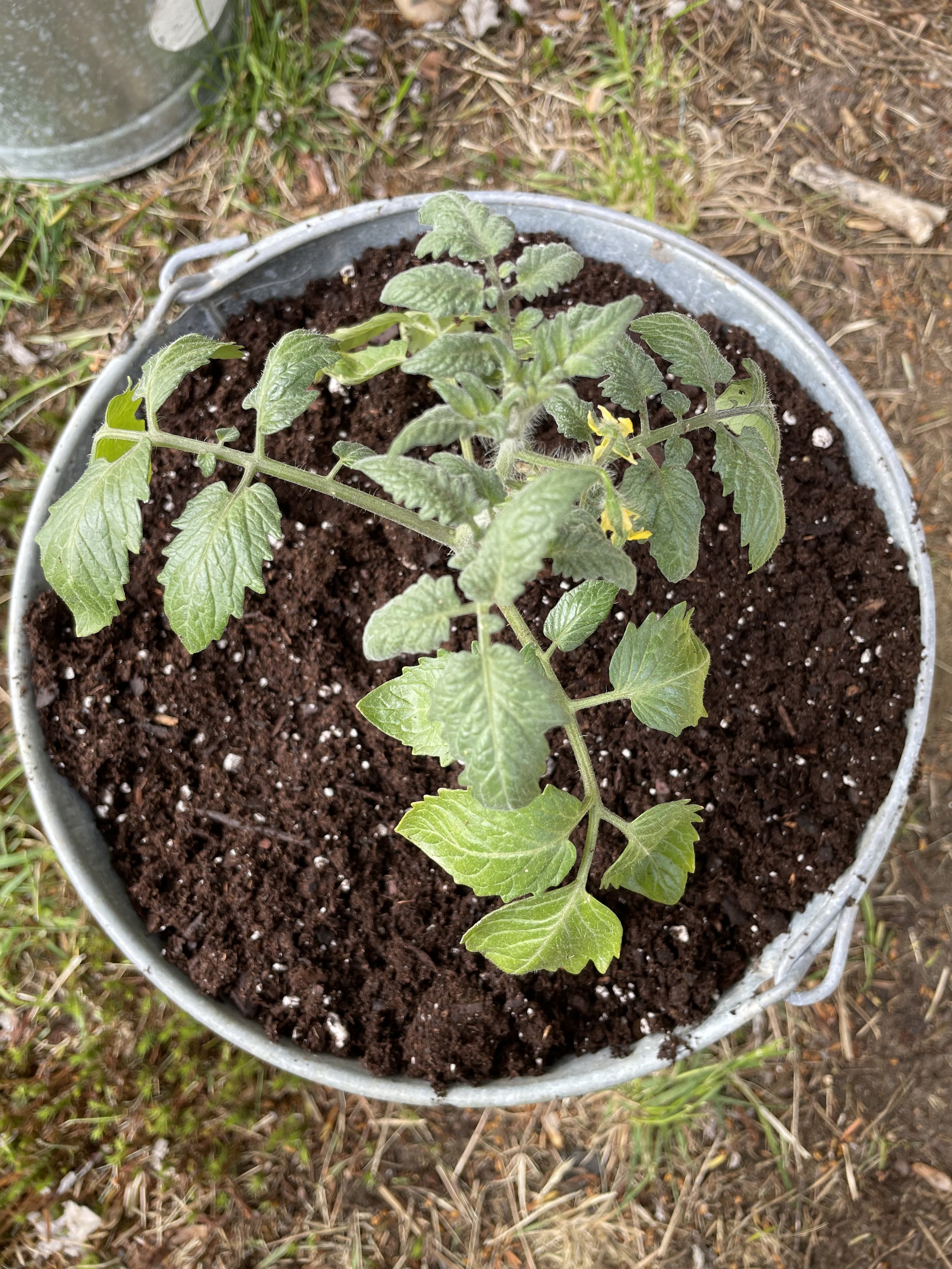The Way I grow Tomatoes
“Growing up with garden-fresh tomatoes readily available, there was never a question that I would eventually try growing my own. The question was, how would I manage it? Tradition is what you make of it- maybe the standard way of doing things doesn’t work for you. Find what does work, and do that, instead.”
Words and images by Deborah McCarthy
South Jersey is known for its tomatoes. Something about the sandy soil just makes for the perfect tomato- one that, for any local, tastes like home. Jersey tomatoes are perfect for summer BBQ, though they are unmatched in salads, too.
Years ago, my city friends marveled at the produce stands on the side of the road- tomatoes, fresh from the garden- just leave your money in the empty coffee can. They found it preciously naive to think no one would take the money, but no one ever did.
Growing up with garden-fresh tomatoes readily available, there was never a question that I would eventually try growing my own. The question was, how would I manage it? We’d had a small garden when I was a child, and though it was nice, it was also lots of work. Ultimately, I saw the wisdom of containers- smaller, more manageable, even a little whimsical. By straying from tradition, I’d be losing the benefits of the local soil, but the simplicity was appealing.
This was over a decade ago. At that time, there weren’t all of the beautiful self-watering options so common these days. I was doing something that, while it worked, wasn’t standard practice, so I read up and I improvised. My goal at the time was simplicity and ease, and this goofy little way of doing things became The Way I Grow Tomatoes.
Tradition is what you make of it- maybe the standard way of doing things doesn’t work for you. Find what does work, and do that, instead. As a total newbie, and the type of person who spent a lot of time in bookstores, I picked up a gardening book. From that book, (Great Food and Vegetable Guide), I chose the most forgiving variety of cherry tomatoes. This happened to be Sweet Million, which, at the time, I could only get as a starter via mail order. While many people can grow tomatoes successfully from seeds, I am one of those people who prefers a starter plant.
Plants ordered, I went to the farm store and bought 4 Behrens feed buckets. I liked the look and size of them, but honestly, any bucket would’ve worked. But, the buckets have stood me in good stead, and are still available, though smaller, if their website is any indication. By investing in galvanized steel, I ended up with something that lasted all this time, while pleasantly aging. At the time, I didn’t wholly understand drainage. But, I found a workaround- 8 1/4” diameter colanders at the bottom of the 15 quart buckets. I only have trouble with pooling after intense thunderstorms. I don’t mind bailing the tops of the buckets out, but if this would bother you, try a setup with pre-existing drainage.



Standard round tomato supports fit just fine, tucked into the space between the bucket and the colander. Although you can set some of the branches onto the support, I like to secure them in case of wind. I’ve tried all sorts of things over the years, but I like twine the best. The twine adds a bit of a country feel, but more importantly, is adjustable and versatile.
That first year, I had no idea just how tall the Sweet Million variety grows. While I’d pruned the sides, I did not prune the top, and ended up with plants about 6 feet high! I ended up doubling up on tomato supports, which worked fine, just looked a little funny. I also ended up with a world of tomatoes! A word of advice- believe them when they say “Sweet Million”! It’s a tasty little tomato, but the plants are prolific. That was the year I learned to make an improvised sauce, but that’s a story for another time!
The first year, I grew my tomatoes organically, but eventually it just got too expensive. I started with Black Gold potting soil, but now use Miracle Gro Potting Mix, which is easier for me to find locally, less expensive, and contains fertilizer. 90-100 degree days with high humidity and occasional thunderstorms mean staying on top of the plants’ health. I use Fungicide 3, which is also suitable for organic growing.
Since my plants are in full sun, I eventually retrofitted the buckets with a simplistic self-watering system. Terra cotta cones, made to hold wine bottles upside down, work just fine with 20 ounce soda bottles. Personally, I like the smaller bottle size, and I didn’t have to outsource 4 wine bottles. I anchor the soda bottles with a loop of twine. I haven’t tried glass soda bottles, but as long as the neck fits, it should be fine. I should also add here that steel buckets in full sun get very hot. Once I set them up, I don’t move them.
Pruning is essential to a plant’s health and your ability to get to the fruit and keep it healthy as it ripens. For years, I just used regular scissors- sacrilege among the purists, I’m sure, but I’d already veered far from tradition, so what was one more thing? It worked acceptably well for many years, but eventually I just wanted something a little easier to use, and with a nicer grip, so I invested in mini-pruners, which I ended up loving.
For the most part, furry friends have not been a problem. When I noticed some bite marks for the first time, I invested in some “bunny-b-gone”- real name, Rabbit Scram. It’s not the most pleasant smelling product, but it gets the job done.
I’ve tried many different varieties, but the best advice I can give is just to check your local garden center. Last year’s crop included Golden Queen cherry tomatoes, Tiny Tim cherry tomatoes, Roma plum tomatoes, and something called a Mortgage Lifter, which I wasn’t too happy with, despite the cool name. (I had trouble with those rotting.) The depth of the bucket has a lot to do with what works and what doesn’t. If you’re mostly interested in large tomatoes, try a larger bucket. Plenty of people use 5 gallon painter’s buckets. For me, cherry tomatoes have been extremely reliable with my size bucket, and they’re mostly left in peace by the woodland creatures.
Just remember, where there’s a will, there’s a way. Find a way to make this local tradition your own- don’t let your surrounding limit your ideas! Even the smallest living space can accommodate an indoor hydroponic tomato garden. Find what works best for you, and then sit back and enjoy that first bite. Chances are, you’ll never want store-bought again!
Words and images by Deborah McCarthy


